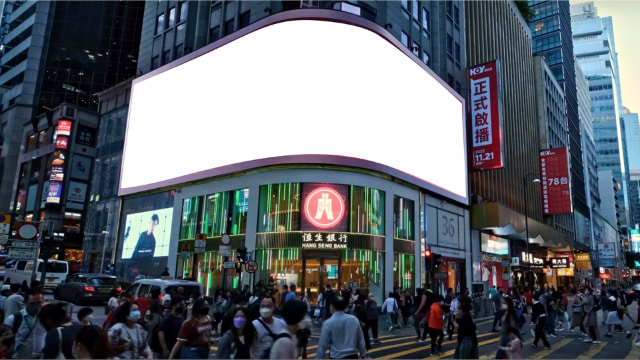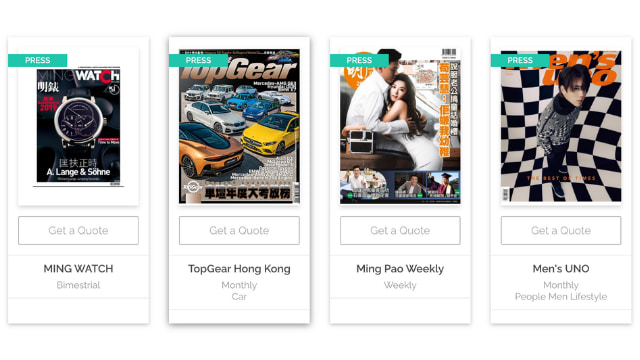What is B2B Advertising? Types, Strategies, Programs
Want to save time?
Summarize this article in seconds with AI
What is B2B Advertising?
B2B advertising, or business-to-business advertising, is the practice of companies marketing their products or services to other businesses rather than directly to consumers. Imagine it like a conversation between professionals: One business showcases what it has to offer, highlighting how it can solve a problem or improve the operations of another business. It's a bit like match-making in the corporate world. Each ad is a pitch, aiming to connect with the right business partner who needs exactly what's being offered. The role of advertising in B2B marketing involves the promotion of physical products such as office furniture, or services such as accounting consulting or logistics, all of which are targeted at businesses.
What is the Key to B2B advertising?

The key to B2B advertising lies in understanding and addressing the specific needs and decision-making processes of businesses. It's quite different from B2C (business-to-consumer) advertising, where emotional appeal and mass market strategies often take centre stage. Let's break it down:
- Know Your Audience: In B2B marketing, your audience is usually more niche and informed. They are looking for efficiency, expertise, and solutions that can improve their business operations. So, knowing their industry, pain points, and business goals is crucial.
- Build Relationships: B2B purchases often involve higher stakes and longer sales cycles. Therefore, building trust and establishing long-term relationships is vital. It's not a one-time sale so you must create ongoing partnerships.
- Focus on Value and ROI: Businesses are primarily interested in how your product or service can benefit them in terms of return on investment (ROI) and efficiency. Your advertising needs to clearly articulate the tangible benefits and real-world applications of your offerings.
- Educate Your Audience: B2B companies/buyers often seek to be educated and informed. Providing valuable content, like whitepapers, webinars, or case studies, can position your brand as a thought leader and a trustworthy source of information.
- Leverage Digital Platforms Strategically: In today’s digital world, online presence is crucial. Using LinkedIn, industry-specific forums, and targeted digital campaigns can be highly effective. Remember, it’s about quality over quantity; reaching a smaller, more relevant audience is more beneficial than a broad, unfocused approach.
- Personalization: Customizing your message to address the specific needs of different businesses can significantly increase the effectiveness of your advertising. Personalization shows that you understand and care about their unique challenges and needs. And you will more likely get positive feedback.
- Data-Driven Strategies: Utilize data analytics to understand market trends, buyer behaviour, and campaign performance. This insight allows for more targeted and effective B2B advertising strategies.
What is B2C?
B2C advertising, or business-to-consumer advertising, is the process of promoting products or services directly to individual consumers. This type of advertising typically focuses on eliciting an emotional response, creating brand awareness, and driving immediate sales. It's about appealing to the needs, desires, and lifestyle preferences of the general public. The messaging is often more straightforward and aims to catch the consumer's attention quickly, highlighting the benefits and unique selling points of the product or service in a relatable and engaging way. The goal is to persuade individuals to make a purchase, often leveraging mass media channels and digital platforms to reach a wide audience.
What is the Key to B2C Advertising?

The key to successful B2C (business-to-consumer) advertising lies in effectively connecting with individual consumers and influencing their purchasing decisions. Here's a concise breakdown of the core elements:
- Emotional Appeal: B2C advertising often leverages emotions – humour, happiness, nostalgia, or even fear – to create a memorable connection with the consumer.
- Understanding Consumer Behavior: Knowing your target audience – their preferences, behaviours, and lifestyle – allows for tailored messages that resonate on a personal level.
- Brand Storytelling: Effective B2C ads often tell a story that consumers can relate to, helping to build a strong brand identity and loyalty.
- Clear and Compelling Message: The advertisement should communicate the benefits and unique selling points of the product or service clearly and compellingly.
- Visual Impact: Eye-catching and high-quality visuals are crucial in B2C advertising to grab attention in a crowded consumer market.
- Call to Action: A clear call to action (CTA) is essential to direct the consumer towards making a purchase or taking the next step.
- Leveraging Multiple Channels: Utilizing a mix of channels – online, social media, TV, print, etc. – helps in reaching a broader audience and reinforces the advertising message.
- Adaptability and Trends: Being adaptable and staying up-to-date with current trends and consumer preferences is crucial for maintaining relevance.
- Customer Engagement: Interactive and engaging content can create a more dynamic relationship with the consumer, increasing brand loyalty.
- Measuring and Analyzing Results: Continuously measuring the effectiveness of advertising campaigns and adjusting strategies based on data and feedback ensures better results.
Difference Between B2C and B2B Advertising
B2C and B2B advertising, while sharing the common goal of driving sales, differ significantly in approach and execution. B2B marketing focuses on logical process-driven purchasing decisions of businesses and emphasizes building relationships and demonstrating return on investment, often through specialized B2B advertising strategies such as LinkedIn campaigns or industry-specific content marketing. B2B advertising companies tend to tailor their messages to a niche audience, highlighting product efficiency, technical details, and long-term value, using platforms suited for B2B digital advertising, like professional networks and trade publications. In contrast, B2C advertising appeals more to consumers' emotions and immediate needs, often through broader and more visually engaging campaigns across a variety of media channels, including social media and television. While B2C advertising is about quick impact and mass appeal, B2B advertising aims for sustained engagement and detailed value proposition, making their strategies distinct yet both critical in their respective domains.
Differences in Marketing Strategies
In B2B marketing, the focus is on building and maintaining deep, informed relationships with business customers, which requires a more nuanced approach compared to B2C. This begins with effectively segmenting your target market and developing detailed buyer personas, leading to a more tailored and impactful marketing plan.
Firstly, engage in top-of-the-funnel marketing tactics. These are designed to raise awareness about a particular problem or need in the market and to stir interest in your product or service as a potential solution. This phase is about educating your audience and positioning your brand as a thought leader.
Next, shift to middle and bottom-of-the-funnel tactics. These are crucial for converting the initial interest into concrete actions, such as inquiries or sales. This step often involves more direct and specific messaging, showcasing how your product or service uniquely addresses the needs and challenges of your audience.
Finally, focus on building customer loyalty. This stage is about transforming one-time transactions into lasting business relationships. Implement B2B marketing strategies that not only retain customers but also encourage them to re-enter the buyer’s journey by presenting them with solutions to new problems they may encounter. This cyclical approach not only sustains but also expands your customer base over time.
OOH Advertising for B2B
Hing Wai Building LED Display in Central
Out of home advertising (OOH) is a form of advertising that can be found outside of a consumer’s home. Traditionally this includes everything from billboards to tram shelters, MTR, and everything in between. If you see an ad outside of your home (and it’s not on your mobile), then you are most likely looking at some kind of OOH ad. Please note that the locations of OOH ads are key to the effectiveness of the advertisement. You should place your advertising messages where your ideal audience would be (this information will come from your target audience research). Ads dotting major highways or transportation to capture commuter attention is also a major method for both B2C and B2B advertising in Hong Kong.
Examples of OOH are:
Print Advertising in B2B
Print advertising is a form of marketing that uses physically printed media to reach customers on a broad scale. Numerous surveys have emphasized that: When it comes to making a B2B purchasing decision, people trust print ads much more than any other channel. Ads are printed in hard copy across different types of publications such as newspapers, magazines, brochures, or direct mail.
Examples of Print Advertising
- Newspaper ads
- Magazine ads
- Direct Mail
- Brochures
Digital B2B Advertising

Digital advertising (also known as online advertising) is a form of marketing used by companies to promote their brand, product, or service through digital channels. B2B digital marketing is a great way to build your brand, generate leads, and optimize your marketing spending. Especially in the era of the pandemic, more and more corporations rely on the digital sphere to get everything done. Businesses are increasingly conducting business online. The greatest advantage of digital marketing for B2B companies is the ability to analyze campaign performance through extensive datasets, target improvement areas, and optimize your campaigns. All these help capture leads across channels more efficiently through focused targeting and audience profiling.
Typical digital B2B advertising consists of:
- Display Ads
- Social Media
- Content Marketing (ie. Blogs, white papers)
Social Media for B2B Companies

B2B companies have a smaller potential customer base, a higher average price point, and a customer decision funnel that is more influenced by word of mouth and reputation. Instagram Stories, Twitter polls, and LinkedIn documents are all perfect examples of utilizing multimedia formats that are unique to each channel. Always bear in mind that social media was created to help people connect with other people. Even though brands have entered and occupied the space for a while now, that sentiment hasn't changed. Your brand won't be able to connect with your audience if all you're doing is pushing your product at them.
An example:
If you have been targeting the Chinese market, WeChat could be a great social media to start with. WeChat is used for both private and business purposes by Chinese users. Because emails or websites are not top of mind for brand communication, Chinese users expect to find detailed information and receive updates from brands on WeChat. WeChat advertising allows you to place promotional messages on users’ timelines, WeChat Official Account articles, and even third-party mini-programs. You can also use WeChat ads to increase the number of followers on your official accounts, boost traffic to your official website or mini-programs.
Example of B2B Advertising Campaigns in Hong Kong - HKTDC
The Hong Kong Trade and Development Council (HKTDC), the leading statutory body in Hong Kong promotes trade by organizing over 900 annual trade fairs, promotional activities and networking events. They aim to grow their network across local and overseas businesses
Source: Internet
Over the years, HKTDC has adopted strategic digital B2B advertising channels to engage business users and test for event registration. Some channels we have helped the HKTDC explore include:
- KOLs
They have also incorporated new features and developments into the standard campaign like custom-built automated Facebook reminders that create a custom Facebook messenger reminder that users can select when registering for an event on a standard landing page. They have maximized social media engagement for B2B audiences by broadening their digital marketing strategy.
Always remember to keep your audience in mind when planning and executing your B2B marketing strategies. If you wish to know more, chat with us and learn more!
 Cookie preferences
Cookie preferences










 Xiaohongshu Advertising Guide: How Can Hong Kong Brands Maximize Their Results?
Xiaohongshu Advertising Guide: How Can Hong Kong Brands Maximize Their Results?
 2x your advertising effectiveness: Master big data to optimize ad ROI
2x your advertising effectiveness: Master big data to optimize ad ROI
 Top 5 Best Ads in 2025 in Hong Kong
Top 5 Best Ads in 2025 in Hong Kong
 Hong Kong Outdoor Advertising Cost in 2026 | Adintime Report
Hong Kong Outdoor Advertising Cost in 2026 | Adintime Report
 Marketing Calendar 2026: Key Dates For Marketing Success
Marketing Calendar 2026: Key Dates For Marketing Success
 The Most Widely-Read Magazine and Newspaper in Hong Kong
The Most Widely-Read Magazine and Newspaper in Hong Kong
 Understanding YouTube Advertising Costs in 2025
Understanding YouTube Advertising Costs in 2025
 OOH /DOOH advertising in Hong Kong: Formats and Rates (2025 Update)
OOH /DOOH advertising in Hong Kong: Formats and Rates (2025 Update)
 How much does LinkedIn Advertising Cost? (2025 Update)
How much does LinkedIn Advertising Cost? (2025 Update)
 Press Ad Basics: Types, Formats and Ad Price
Press Ad Basics: Types, Formats and Ad Price